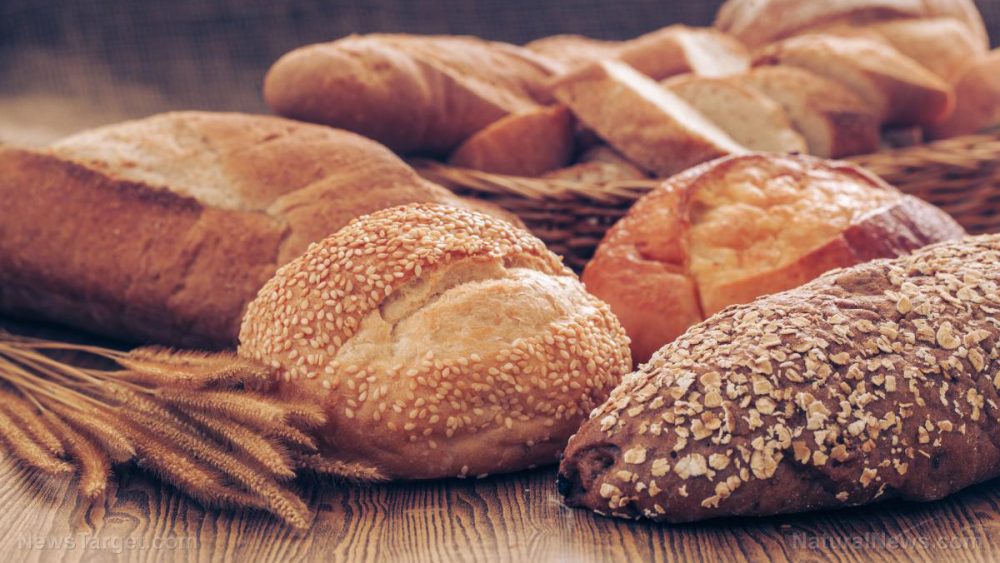
Advertisement
It turns out, to make great bread, you have to turn to…statistics.
In a study that appeared in CyTA – Journal of Food, researchers from Poland found that a statistical method known as response surface methodology (RSM) can greatly impact both the quality and nutritional profile of wheat bread rolls that have been fortified with oat fiber. In particular, the team from the Warsaw University of Life Sciences looked at the best way to use RSM in determining the best flour replacement levels and particle sizes in making bread rolls.
RSM is a method used to optimize a response that is dependent on various independent variables. It helps researchers identify the reason behind any changes in the expected output response. It was initially created to determine experiment-based responses, but it was developed later on to be used in numerical experiments. In the paper, the researchers used RSM to arrive at the optimal amount of oat fiber powder to be used in fortifying wheat flour, given there is little scientific literature available on how the size of oat fiber particles affects bread production.
The team looked at the particle size of the oat fiber powder and how much of it will replace wheat flour as it is made into bread rolls. The team evaluated the quality of the resulting bread by its yield, volume, moisture content, crumb and crust color, firmness, springiness, sensory attributes, and total dietary fiber (TDF) content. Using RSM, researchers determined that bread that had smaller amounts of dietary fiber had increased yield and moisture content; however, it also had decreased volume. In addition, flour replacement and particle size also affected the color of the resulting bread, and firmness was directly proportional to both the particle size and flour replacement of the oat fiber powder. A sensory analysis indicated that the most acceptable combination of wheat rolls was that with the lowest flour replacement value and the highest oat fiber particle size.
From the results, they found that the ideal bread, in terms of nutrient value and quality, was one that was made using at least eight percent oat fiber powder with a particle size of around 125 micrometers. It also contained the most fiber per serving, with 6 g of fiber per 100 g — making it ideal for those looking to increase their fiber intake.
“Through this study, it was possible to verify that depending on FR and PS, various responses could be obtained for the traits of bread,” the researchers concluded in their study. “Knowing this, the oat fiber could be used by the researchers and food technologists to obtain desired properties.” (Related: Can’t live without fried desserts? Blending mixes with oat bran and psyllium husk fiber reduces their oil content.)
Making your own organic honey oat bread
The science says that adding oats to wheat flour makes for a fiber-filled bread, so here’s a great way to start adding wheat and oats to your morning bread. (h/t to GrowingGreenFamily.com.)
What you’ll need:
- 2 tablespoons of yeast
- ? cup of organic honey
- 1 ¼ cups of warm water
- 1 cup of milk
- 2 tablespoons of salt
- 2 tablespoons of olive oil
- 2 ½ cups of organic whole wheat flour
- 4 cups of unbleached flour
- 2 tablespoons of ground flaxseeds
- 1 cup of organic whole oats
How to do it:
- Pour ½ cup of warm water in a large bowl.
- Sprinkle yeast over the water and add 1 tablespoon of honey. Let it stand for around five minutes.
- Mix in the remaining water, honey, milk, salt, and olive oil.
- Add wheat flour, flax, and 2 cups of unbleached flour into the water, and mix (either with your hands or a wooden spoon) for at least five minutes.
- Add the oats and the remaining flour. Mix until the oats are incorporated into the dough.
- Flour a flat surface, turn the dough out and knead for at least 10-20 minutes. Add in more flour, if needed, to prevent sticking. The dough should feel springy and smooth after kneading.
- Form a ball from the kneaded dough.
- Place the dough in a lightly oiled bowl. Cover it with a cloth and let it rise until it has doubled in size. This usually takes an hour, depending on the room’s temperature.
- Punch down the dough. Despite the name, this requires pushing the dough gently and firmly in the center until it has flattened — and repeating it at least twice.
- Split the dough into two parts. Shape these in to loaves and place in lightly oiled bread pans. Let it rest again.
- After the dough has doubled, put it in a oven set at 350 F and bake for at least 30-40 minutes.
- Turn out the loaf from the pan and let it cool on a wire rack.
Learn more about wheat bread at Food.news.
Sources include:
Advertisements







